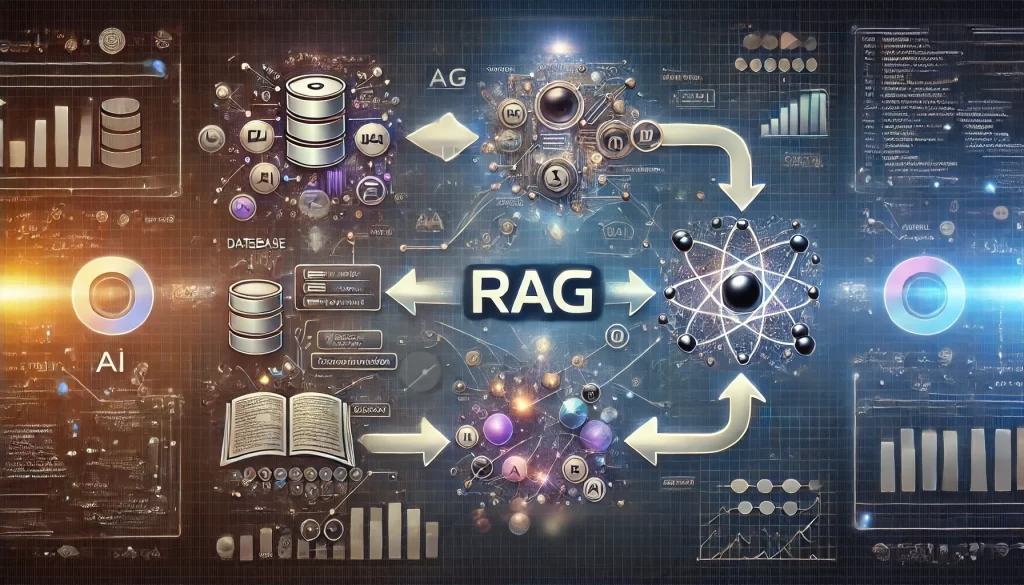Introduction
In the rapidly evolving field of Artificial Intelligence, the Retrieval-Augmented Generation (RAG) model stands out as a groundbreaking innovation. Combining the strengths of retrieval-based and generative models, RAG significantly enhances the capabilities of AI systems in providing accurate, context-aware, and informative responses. This article delves into the mechanics of the RAG model, its applications, and its potential to revolutionize the landscape of generative AI.
Understanding the RAG Model
RAG is a hybrid model that integrates two main components:
- Retrieval-Based Model: This component involves a large corpus of documents or knowledge base from which relevant information is retrieved based on a given query.
- Generative Model: This model generates coherent and contextually relevant responses using the information retrieved by the first component.
By combining these two approaches, the RAG model addresses some of the limitations inherent in purely generative or retrieval-based models.
How RAG Works
The RAG model operates in two main phases:
Retrieval Phase: When a query is presented, the model searches a pre-existing knowledge base to find the most relevant documents. This is typically achieved using a dense retrieval mechanism, such as BERT-based encoders, which ensures that the retrieved documents are semantically aligned with the query.
Generation Phase: The retrieved documents are then fed into a generative model, like GPT-3, which synthesizes a response that incorporates the retrieved information. This process ensures that the generated response is both informative and contextually appropriate.
Key Benefits of the RAG Model
- Improved Accuracy: By leveraging a large corpus of pre-existing knowledge, the RAG model can provide more accurate and contextually relevant responses compared to purely generative models.
- Contextual Awareness: The integration of retrieval-based techniques ensures that the generated responses are grounded in factual information, enhancing the model’s ability to maintain context over longer interactions.
- Scalability: The retrieval component allows the model to access and utilize vast amounts of data without the need to retrain the generative model, making it highly scalable for various applications.
Applications of the RAG Model
The versatility of the RAG model makes it suitable for a wide range of applications:
- Question Answering Systems: RAG can be used to build sophisticated Q&A systems that provide precise and context-aware answers by retrieving relevant information from extensive knowledge bases.
- Customer Support: By integrating RAG into customer support systems, businesses can offer more accurate and helpful responses to customer inquiries, improving overall user satisfaction.
- Content Creation: RAG can assist in generating high-quality content by leveraging existing information, making it valuable for tasks like summarizing articles, drafting reports, or even creative writing.
- Educational Tools: In the realm of education, RAG can be employed to create intelligent tutoring systems that provide detailed explanations and resources based on student queries.
Challenges and Future Directions
While the RAG model presents numerous advantages, it also comes with certain challenges:
- Complexity: The integration of retrieval and generation components increases the model’s complexity, necessitating sophisticated engineering and computational resources.
- Dependence on Quality of Retrieved Data: The quality and relevance of the generated response are heavily dependent on the retrieved documents. Ensuring the retrieval mechanism is robust and reliable is crucial.
- Ethical Considerations: As with all AI systems, ensuring that the RAG model adheres to ethical guidelines, such as fairness and bias mitigation, is essential.
Conclusion
The Retrieval-Augmented Generation (RAG) model represents a significant advancement in the field of generative AI. By combining the strengths of retrieval-based and generative approaches, RAG offers a powerful tool for developing more accurate, contextually aware, and informative AI systems. As research and development in this area continue, the RAG model holds the potential to transform various applications, from customer support to educational tools, making AI more useful and reliable in our daily lives.

